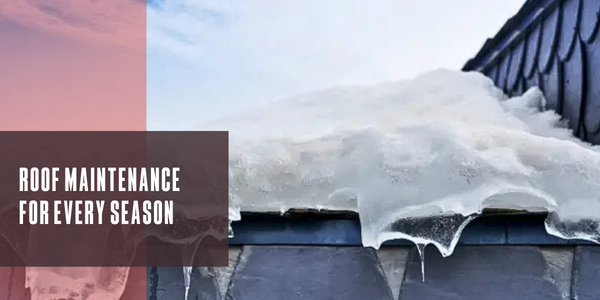3 Pieces of Advice on Waterproofing a Roof

By Rob White, GCP.
How to help a roof stand up to the new norm of extreme weather.
As extreme weather becomes increasingly more common, it is clear that we need to approach how we construct and repair buildings to match the new challenges Mother Nature presents. As the weather becomes unpredictable and volatile, it is our job to ensure that all homes can be constructed to withstand near any kind of weather from snow to wind-driven rain.
On top of the extreme weather conditions, the Atlantic hurricane season takes place each year from June 1 to November 30, with maximum activity historically seen in early to mid-September. Hurricane hazards come in many forms, including storm surges, high winds, tornadoes and flooding.
One of the biggest challenges in weatherproofing a structure is keeping water from leaking through a roof. By its nature, water runs down a roof. In any size storm from downpours to just a drizzle, water will find holes and seep under shingles. Wind, snow and ice also hammer a roof and can raise the shingles, causing leaks. If there is a way in, water will find it. Thus, it is critical that every slope and corner of a roof be constructed to withstand any degree of water to prevent damage and costly repairs.
So, how do you keep a roof dry to seal out water damage? The first piece of good news is that building product companies are on top of it, continuing to innovate and manufacture new products that can help keep homes safe during extreme weather. The second piece of good news is that there are simple things to be aware of and steps that can be taken to properly repair and protect a roof from future water damage:
-
Inspect - First, assess the damage. Look for curled shingles, broken or missing tiles; these all warrant repair. Also inspect the flashing, drainage system and accessories such as vents and skylights.
-
It’s what’s underneath that matters - The complete roof system consists of multiple layers, not just the shingles. Shingles are the exterior layer, and shingles alone will not keep the snow, ice and water out. What makes the difference and protects a roof from damage is the roofing underlayment, which is installed underneath the shingles. Roofing underlayments perform many functions in a roofing assembly, but first and foremost, they serve as the last line of defense between homeowners and the damaging effects of water infiltration.
-
Use the right products - Don’t skimp on quality to save a few cents. Much of the damage associated with serious storms results from water entering the home when roof coverings or siding is blown off. This is why it is imperative to have a secondary layer of waterproofing protection underneath the shingles. If proper protection measures are not taken, the resulting leaks are the main cause of interior damage, as well as potential causes of rot and mold. Rot and mold can lead to major structural damage and even potential health problems for homeowners.
The Federal Emergency Management Agency (FEMA) has published recommendations for the use of fully-adhered roofing underlayments as an enhanced secondary water barrier for homes in both coastal and inland hurricane-prone areas. For over 40 years, contractors have relied on GRACE ICE & WATER SHIELD® fully adhered roofing underlayment from GCP to provide quality protection. GRACE ICE & WATER SHIELD® self-adhered roofing underlayment provides premium performance as it seals to itself at overlaps, seals to the roof deck, and most importantly, seals around the fasteners used to attach the shingles, helping prevent water from leaking into the home. In the event roof coverings are blown off or water manages to get underneath shingles, these underlayments are the key to preventing water infiltration.
Selecting the proper construction materials now will make a big difference in the future. The amount saved by selecting less expensive, lower quality products is insignificant compared to the costly repairs for damage caused by water infiltration. By using high-quality materials that are specifically made to protect a home from ice and water, you will ensure a more water and weather-tight home, providing your clients peace of mind.
Learn more about GCP in their RoofersCoffeeShop® Directory or visit www.gcpat.com.
Original article source: GCP
Recommended For You

Understanding Wildland Urban Interface (WUI)
Read More ...
Beat the Cold Weather With the Right Underlayment
Read More ...
Roof maintenance for every season
Read More ...

-2025-xtv-mls-tour-2.png)















Comments
Leave a Reply
Have an account? Login to leave a comment!
Sign In